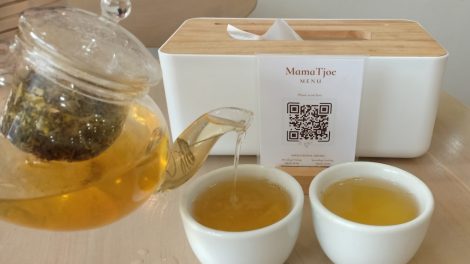As I delve into the philosophy of Stoicism, I find it to be a profound lens through which to view the challenges of chronic pain. Stoicism, rooted in ancient Greek philosophy, teaches the importance of distinguishing between what is within our control and what is not. This principle resonates deeply with me, especially when grappling with the relentless nature of chronic pain.
The Stoics believed that while we cannot control external circumstances, we can control our responses to them. This understanding has become a cornerstone in my journey of managing pain, allowing me to shift my focus from the pain itself to my reactions and attitudes toward it. Chronic pain can often feel like an insurmountable obstacle, a constant reminder of limitations and suffering.
However, through the lens of Stoicism, I have learned to view my pain not as a defining characteristic but as a part of my experience. The Stoics emphasized the importance of virtue and character over external circumstances. This perspective encourages me to cultivate resilience and strength in the face of adversity.
By embracing the Stoic belief that suffering is an inevitable part of life, I find a sense of solidarity with others who endure similar struggles. This shared human experience fosters a deeper understanding of my own pain and allows me to approach it with a sense of acceptance rather than resistance.
Key Takeaways
- Stoicism offers a practical philosophy for managing chronic pain by focusing on what is within our control and accepting what is not.
- Acceptance of chronic pain involves acknowledging the reality of the situation and embracing it as a part of life, rather than resisting or denying it.
- Developing resilience and inner strength through Stoic practices can help individuals cope with the challenges of chronic pain and maintain a sense of control over their lives.
- Cultivating mindfulness and presence allows individuals to stay grounded in the present moment, reducing the impact of chronic pain on their overall well-being.
- Finding purpose and meaning in the midst of pain involves reframing the experience and using it as an opportunity for personal growth and self-discovery.
Accepting and Embracing the Reality of Chronic Pain
Acceptance has been a pivotal theme in my journey with chronic pain. Initially, I found myself in a constant battle against my condition, wishing for relief and resenting the limitations it imposed on my life. However, as I began to embrace the Stoic principle of acceptance, I discovered a profound shift in my mindset.
Accepting my pain does not mean resigning myself to it; rather, it means acknowledging its presence without allowing it to dictate my life. This acceptance has opened the door to a more peaceful coexistence with my pain. Embracing the reality of chronic pain has also allowed me to cultivate a sense of agency in my life.
Instead of viewing myself as a victim of circumstance, I have learned to take ownership of my responses and choices. This shift in perspective empowers me to seek out strategies for managing my pain rather than waiting for external solutions. By accepting my situation, I can focus on what I can control—my thoughts, actions, and attitudes—rather than becoming consumed by what I cannot change.
This acceptance has been liberating, enabling me to find moments of joy and fulfillment even amidst the challenges.
Developing Resilience and Inner Strength

Resilience is a quality that I have come to value immensely in my journey with chronic pain. The Stoics taught that adversity can be a powerful teacher, shaping our character and fortifying our inner strength. Each flare-up or challenging day serves as an opportunity for growth, pushing me to dig deeper within myself and discover reserves of strength I never knew existed.
Through this lens, I have learned to view my pain not as an enemy but as a catalyst for personal development. Building resilience requires intentional effort and practice. I have found that setting small, achievable goals helps me cultivate a sense of accomplishment despite the limitations imposed by chronic pain.
Whether it’s completing a simple task or engaging in a creative outlet, these small victories contribute to my overall sense of well-being. Additionally, I have learned to embrace discomfort as a natural part of life. By reframing my relationship with pain, I can approach challenges with curiosity rather than fear.
This shift allows me to navigate difficult moments with greater ease and confidence.
Cultivating Mindfulness and Presence
Mindfulness has become an essential tool in my toolkit for managing chronic pain. The practice of being present in the moment allows me to step back from the overwhelming sensations of pain and observe them without judgment. By anchoring myself in the present, I can create space between myself and my discomfort, reducing its emotional weight.
The Stoics emphasized the importance of living in accordance with nature, which includes acknowledging our physical sensations without becoming entangled in them. Incorporating mindfulness into my daily routine has transformed how I experience pain. Simple practices such as deep breathing, meditation, or mindful walking help ground me in the present moment.
When I focus on my breath or the sensations around me, I find that my pain becomes less consuming. Instead of spiraling into anxiety or frustration about what lies ahead, I can appreciate the beauty of each moment, even when it is tinged with discomfort. This practice fosters a sense of acceptance and peace that permeates my daily life.
Finding Purpose and Meaning in the Midst of Pain
Finding purpose amidst chronic pain has been a transformative aspect of my journey. The Stoics believed that our struggles can lead us to discover deeper meaning in life. As I grappled with the limitations imposed by my condition, I began to explore what truly matters to me.
This exploration has led me to engage in activities that align with my values and passions, providing a sense of fulfillment that transcends physical discomfort. Engaging in meaningful pursuits has become a source of strength for me. Whether it’s volunteering, pursuing creative endeavors, or connecting with others who share similar experiences, these activities infuse my life with purpose.
The Stoic idea that we can choose how we respond to our circumstances resonates deeply as I navigate this journey. By focusing on what brings me joy and fulfillment, I can transcend the confines of chronic pain and create a life rich with meaning.
Practicing Gratitude and Perspective Shifts

Gratitude has emerged as a powerful practice in my life, especially in the context of chronic pain. While it may seem counterintuitive to express gratitude when faced with suffering, I have discovered that shifting my perspective can illuminate aspects of life that are often overlooked. The Stoics encouraged gratitude as a means of cultivating contentment and resilience.
By acknowledging the positive elements in my life—even amidst pain—I can foster a sense of appreciation that uplifts my spirit. Each day presents an opportunity to reflect on what I am grateful for, no matter how small it may seem. Whether it’s the support of loved ones, moments of laughter, or simply the beauty of nature around me, these reflections help me maintain a balanced perspective.
When chronic pain threatens to overshadow my experiences, practicing gratitude serves as a reminder that there is still much to cherish in life. This shift in focus allows me to cultivate joy alongside discomfort, creating a more holistic approach to living with chronic pain.
Using Stoic Practices for Pain Management
Incorporating Stoic practices into my daily routine has proven invaluable for managing chronic pain. One key principle is the practice of negative visualization—imagining how much worse my situation could be helps me cultivate appreciation for what I do have. By contemplating potential challenges or losses, I can reframe my current experience and find solace in the fact that I am still capable of engaging with life despite my pain.
Another Stoic practice that resonates with me is journaling. Writing down my thoughts and feelings allows me to process my experiences more effectively. It serves as an outlet for expressing frustrations while also providing clarity on what truly matters to me.
Through journaling, I can track patterns in my pain and identify triggers or coping strategies that work best for me. This reflective practice aligns with the Stoic emphasis on self-examination and personal growth.
Seeking Support and Connection within Stoic Communities
Finding connection within Stoic communities has enriched my journey with chronic pain immensely. Engaging with others who share similar philosophies fosters a sense of belonging and understanding that is often hard to find elsewhere. Online forums, local meetups, or reading groups centered around Stoicism provide spaces where I can share experiences and learn from others’ insights.
These connections remind me that I am not alone in facing challenges; many individuals navigate their own struggles while embracing Stoic principles. Sharing stories and strategies for coping creates a supportive environment where we can uplift one another. The collective wisdom within these communities reinforces the idea that resilience is not just an individual endeavor but a shared journey toward growth and understanding.
In conclusion, embracing Stoicism has profoundly shaped how I navigate chronic pain. Through acceptance, resilience, mindfulness, purpose-seeking, gratitude practices, and community connection, I have cultivated a more empowered approach to living with discomfort. While chronic pain remains an integral part of my experience, it no longer defines me; instead, it serves as a catalyst for personal growth and deeper understanding of life’s complexities.









Add Comment